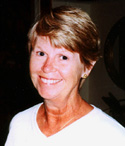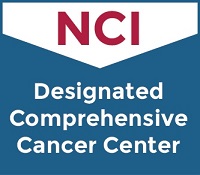Clinical Trials Can Offer New Hope to Cancer Patients
Trials and Triumphs: How Clinical Trials Can Offer New Hope to Cancer Patients
Clinical trials play a very important role in improving the survival and quality of life of patients with many types of cancer. By participating in a research study or cancer clinical trial, individuals touched by cancer have an opportunity to help in the fight against cancer by making progress towards new and better treatments.
The University of Maryland Greenebaum Comprehensive Cancer Center (UMGCCC) currently is conducting more than 150 active clinical trials. Here is one UMGCCC patient's story, as shared at the annual Leukemia and Lymphoma Society meeting.
Susan J. Marcheski, UMGCCC Bone Marrow Transplant Patient

It seems like only yesterday that I was diagnosed with CML (chronic myelogenous leukemia), but it’s actually been more than eight years. The first year was one of medical ups and downs. At one point, I was hospitalized for more than two weeks. My local oncologist was worried that a transplant needed to be investigated sooner rather than later. Her suggestion was to come to the University of Maryland Greenebaum Comprehensive Cancer Center (UMGCCC) to find out about a bone marrow transplant.
At the time, UMGCCC was only doing related donor transplants, and my only sibling was not a match. So, it was off to another hospital to see what treatments they had to offer. I was thrilled to be told I was too old for an unrelated donor, but new clinical trials were going on and perhaps, in time, I might make a fit.
In the meantime, the large doses of intron I was taking put me into a short-term remission. The intron was not without its problems – liver problems turned into jaundice, I experienced extreme fatigue and the need for transfusions. During this time, I was teaching a first grade class and the fatigue also had an effect on my job.
Eventually the intron quit controlling the leukemia cells. What was I going to do next? Autologous transplants were showing some promise, and it was suggested they might be an option for me. In October of 1999, two and a half years after my initial diagnosis, I entered the hospital for my bone marrow harvest, but my marrow was not healthy enough to continue. It was a devastating day. Tears were plentiful for a day or so, but there had to be other options out there. The internet is a wonderful resource to learn about clinical trials. Fortunately, it was there that I learned about Dr. Aaron Rapoport's (associate professor of medicine in the University of Maryland School of Medicine, director of gene medicine/lymphoma and associate director of the Bone Marrow/Stem Cell Transplant Program at UMGCCC) clinical trial.
All through my original diagnosis, transplant, and even today, I have been fortunate to have a wonderful local oncologist, Dr. Martha Hosford, who was always willing to encourage me and work with other doctors. I had also been assigned a case manager associated with my health insurance company, who proved to be extremely valuable. I would strongly suggest that anyone who has a long-term health issue check with their health insurance company to see if this is an option. Also, check to make sure clinical trials are covered by your insurance.
After checking with my oncologist and my case manager, I met with Dr. Rapoport. It was a whirlwind happening. Extensive testing had already been done for my treatment, so we moved quickly in order to be able to use these tests. Kathy Ruehle, transplant coordinator at UMGCCC, was my major contact and led me through the maze of technicalities. I was thrilled when Dr. Rapoport said I would be a good candidate to be in his clinical trial.
By now, it was early November. After becoming acclimated with the bone marrow transplant clinic and the supportive staff, I was fitted with a port and was scheduled for a stem cell collection. What good news! My stem cells and T-cells were plentiful. The cells were frozen to be treated and used later.
On December 1, I was admitted for three days of chemo. It was not as bad as I expected. In about a week, my hair fell out. I harbor a great dislike for deer. Every year they consume my flower garden. Supposedly, deer are repelled by human hair. So I went out back and scattered my hair over my garden and amongst the ivy. For everything, there is a reason!
Unfortunately, I developed an infection in my port and had to spend the next two weeks in the hospital. I was released on December 23, just in time for Christmas.
On January 31, I was admitted into the bone marrow unit, then began four days of chemo and a week later my treated stem cells were re-infused. The whole procedure was fairly anticlimactic. The slow process began of charting the return of platelets, red and white cells, along with the ability to hold down food. I left the hospital at the end of February and returned to work in April.
When I was originally diagnosed, my doctor said the average life expectancy for CML patients without a bone marrow transplant was 3 ½ years. At the time, our youngest child had just finished her first semester of high school. I was determined to be alive to see her graduate. Our one son was in his senior year of college, and our oldest had graduated college.
Proudly, I stand before you today and report that both of our sons are married and employed, with benefits. Our daughter finished her college degree this past December and, during those first traumatic few months, my husband completed his dissertation and received his EdD.
I would be lying to say that every day has been easy, but I can say every day is a blessing. Would I recommend participating in a clinical trial? Wholeheartedly, yes. Would I do it again? Definitely! I had my five-year checkup last week, and I am excited to say it went very well.
After much consternation, my husband and I decided I would retire from teaching to give my body a fighting chance. We were fortunate to be able to make that choice, even though our way of life changed.
Today, there are options available for CML patients, thanks to other people who were willing to try experimental treatments. Hope continues, and clinical trials provide that opportunity for hope. I would like to thank everyone at UMGCC who was involved in my journey. And to Dr. Rapoport, words are not enough. When coming to our home, you will see a sign hanging over our stairs. It reads: Never, never give up.


